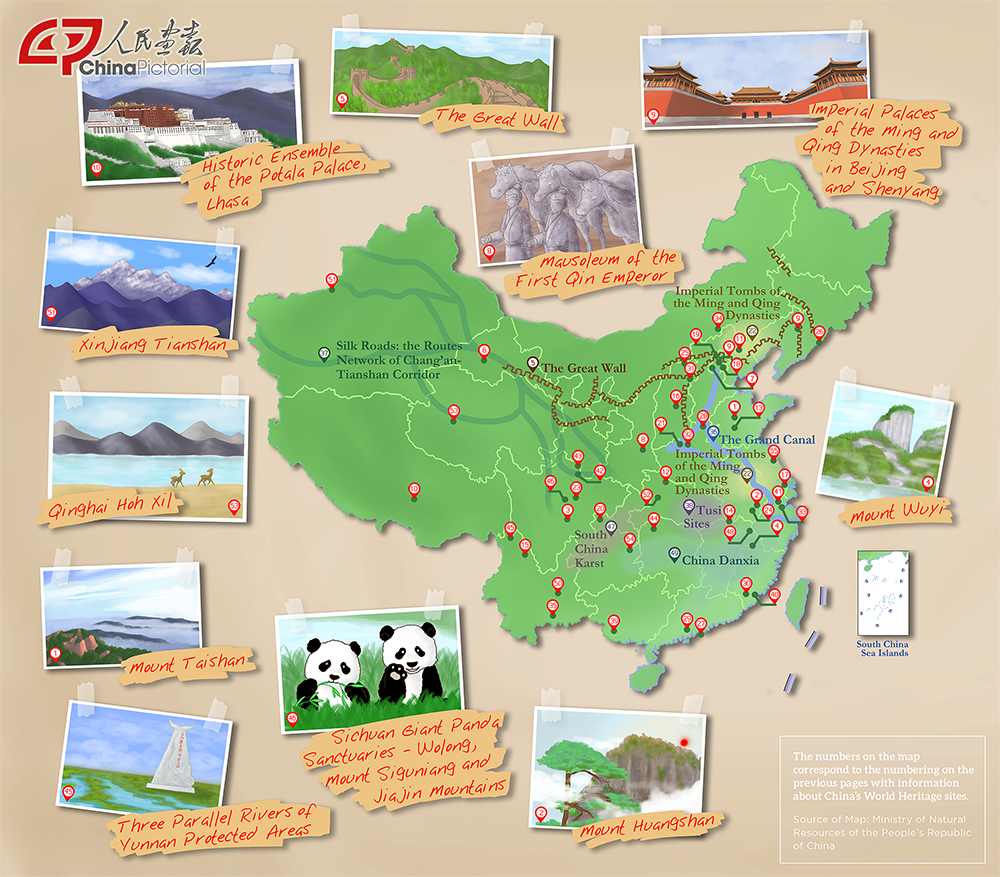Global Treasures: A Map of China’s World Heritage Sites
Edited by
Zhao Yue
Photographs by
China Pictorial

The proportion of UNESCO World Natural and Cultural Heritage sites in China is uneven, with 37 cultural heritage sites accounting for 67 percent of the total, only 14 natural heritage sites accounting for about 26 percent, and four mixed cultural and natural heritage sites accounting for about seven percent.
- China’s “World Heritage” overall distribution stretches from the northeast to the southwest. A dense concentration of sites is found along the middle and low reaches of the Yellow River and the Yangtze River. Those regions boast not only natural landscapes formed during the long-term evolution of Earth but also many cultural relics left by frequent human activities since ancient times.
- World Heritage sites are found in 88 percent of China’s 34 provincial-level administrative regions, except for Hong Kong Special Administrative Region, Taiwan Province, Shanghai Municipality, and Hainan Province.
- If China is bisected into south and north by the Qinling Mountains and the Huaihe River, there is a clear and significant difference in terms of World Heritage categories between the two regions. The northern region is dominated by cultural heritage sites, while the southern region’s natural heritage sites rivals its cultural heritage sites.
- The differences of World Heritage categories and their uneven distribution in northern and southern parts of China are mainly determined by differences in the geographical environment as well as the social and economic environment. The Yellow River Basin in northern China has long nurtured the development of Chinese civilization. This region has long been the political, economic and cultural center of the country and is home to extensive cultural heritage. After the beginning of the country’s reform and opening up in the late 1970s, the economy of southern China, especially the southeastern region, developed rapidly. As the country has developed, greater attention has been placed on the application for World Heritage status and the protection of existing World Heritage sites, resulting in a continuous increase of such sites in China.
Sources: UNESCO official website, China’s World Heritage published by Beijing Language and Culture University Press and Analysis of Characteristics and Spatial Distribution of China’s World Heritage Sites published in Journal of Natural Resources in 2016.